August 3rd, 2021
7minute read
Cartridge rifles came late to U.S. armed forces.
The 1841 Mississippi rifle was the first U.S.percussioninfantry arm.
Colonel Jefferson Davis requested it for his volunteer Mississippi regiment.
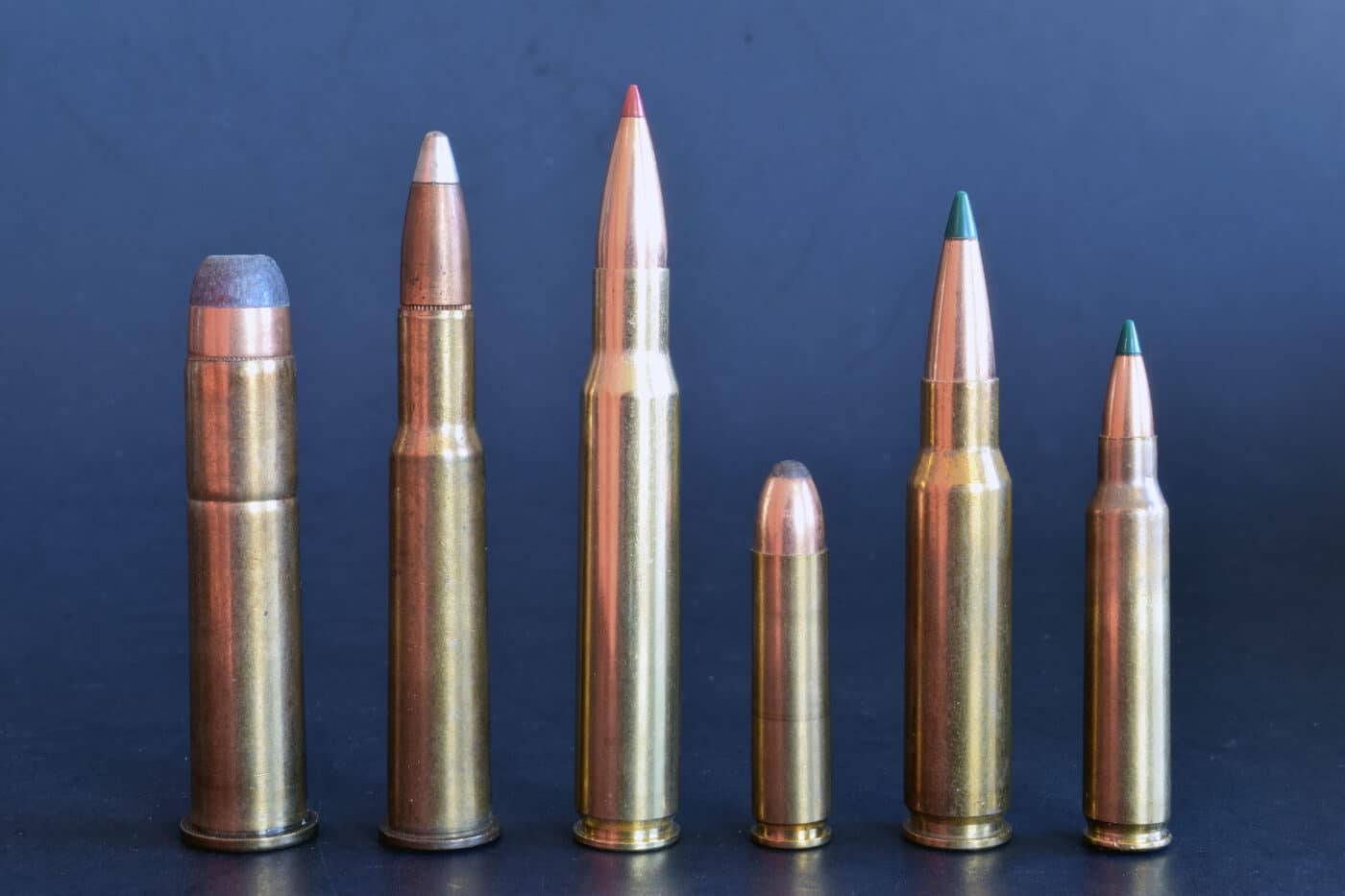
U.S. infantry rounds, left to right: .45-70, .30-40 Krag, .30-06, .30 Carbine, 7.62×51 (.308), 5.56×45 (.223).
His superiors demurred; President Polk didnt.
Under-size for easier loading, this bullet had a hollow base that expanded on firing to take the rifling.
In 1856 the Mississippi rifle was replaced by an improved Model 1855.
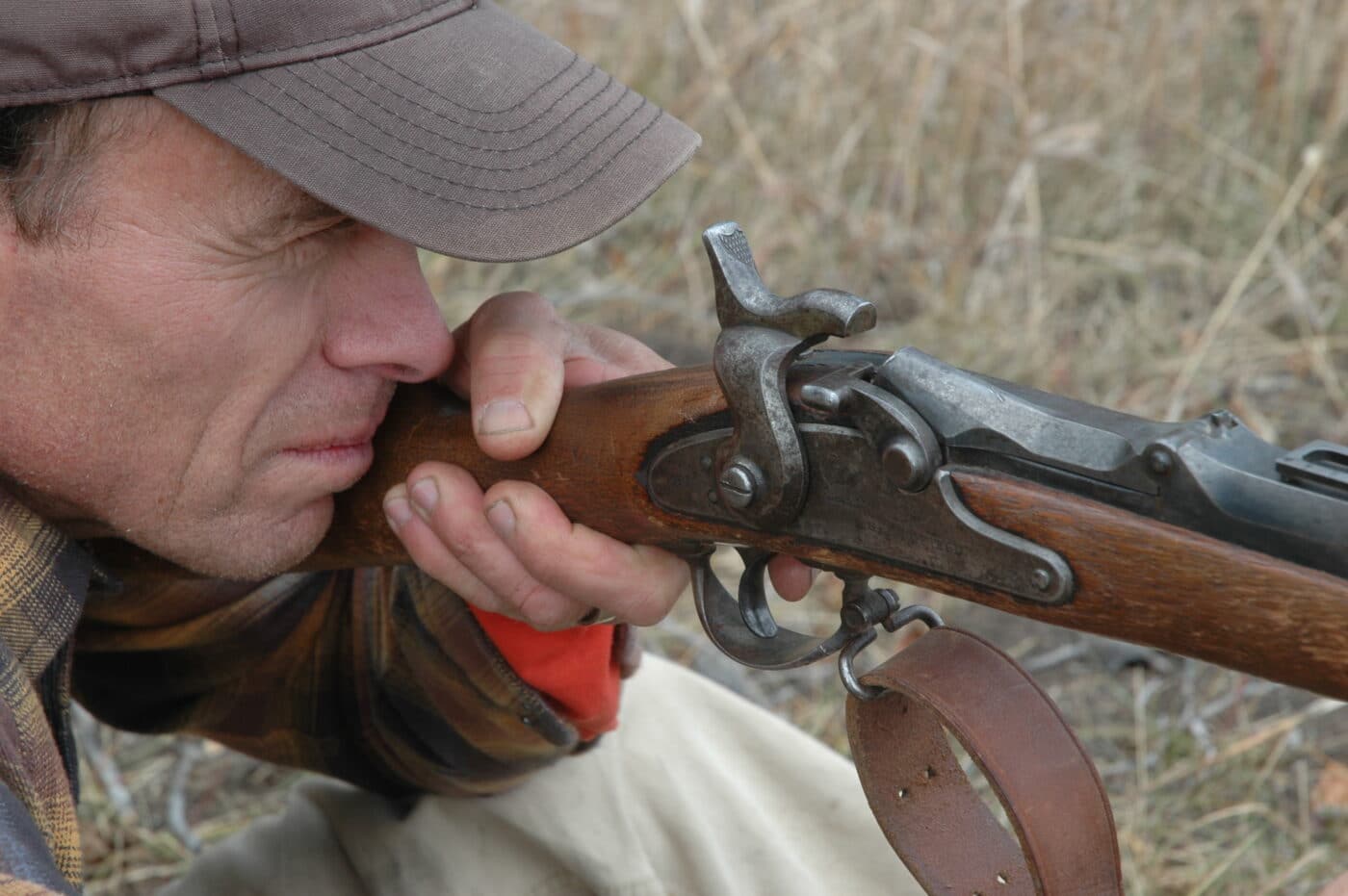
The trap-door Springfield appeared first in .50-70 (here), but saw most service in .45-70 after 1873.
The Civil War triggered mass production of Model 1861 Springfields.
By 1865 a million of these rifles would be built, many sub-contracted by Springfield Armory.
Early on, rifles and muskets with flint ignition were hurriedly converted to percussion fire.
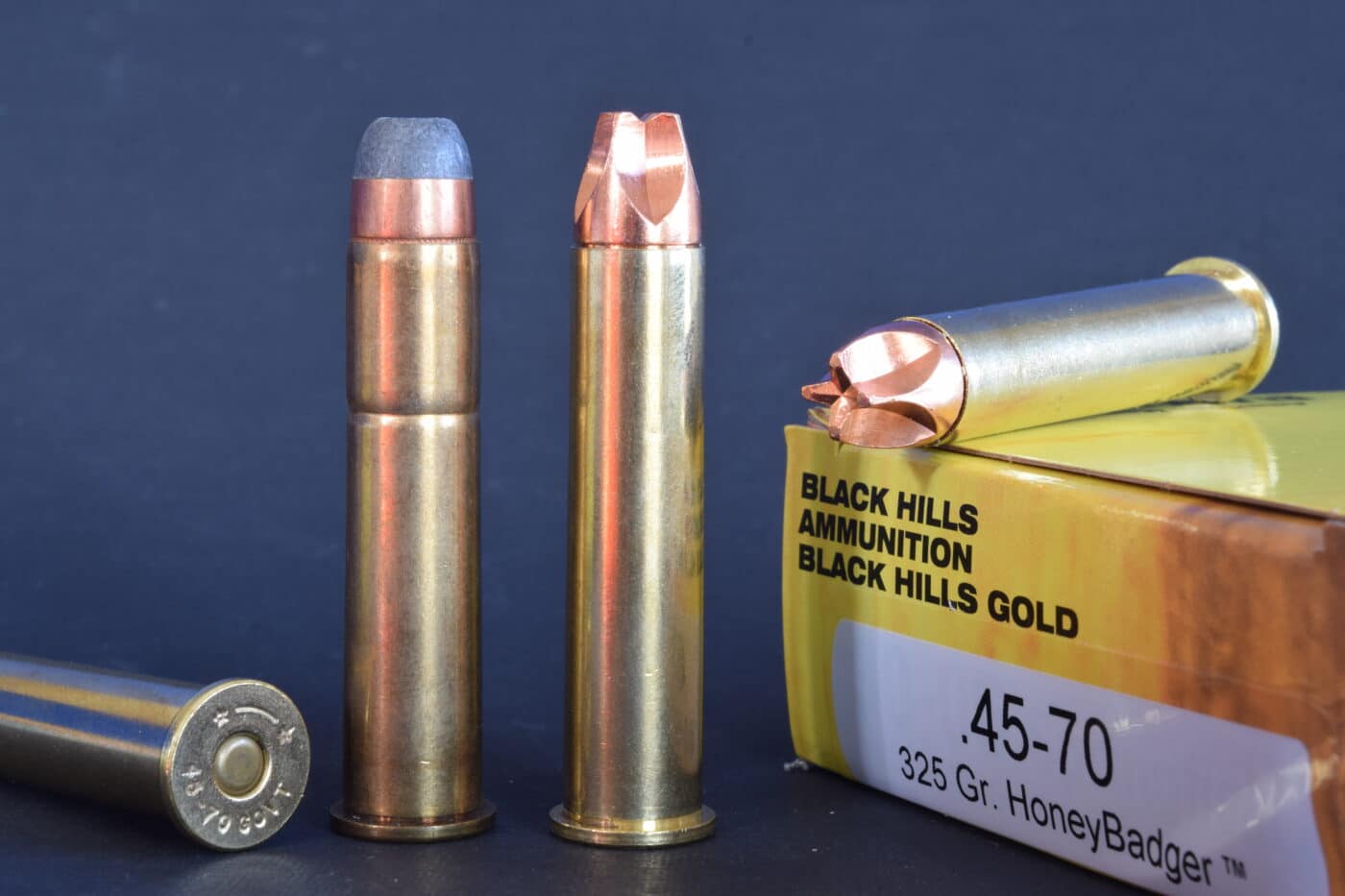
Early .45-70 loads (left) fired 405-gr. bullets at 1,320 fps. BHA’s Honey Badgers send 325s at 1,775 fps.
Confederate troops typically used British-pattern Model 1853 Enfields.
The Union Army followed the Model 1861 Springfield with the Model 1863.
A decade later the breech-loading Model 1873 cartridge rifle appeared.
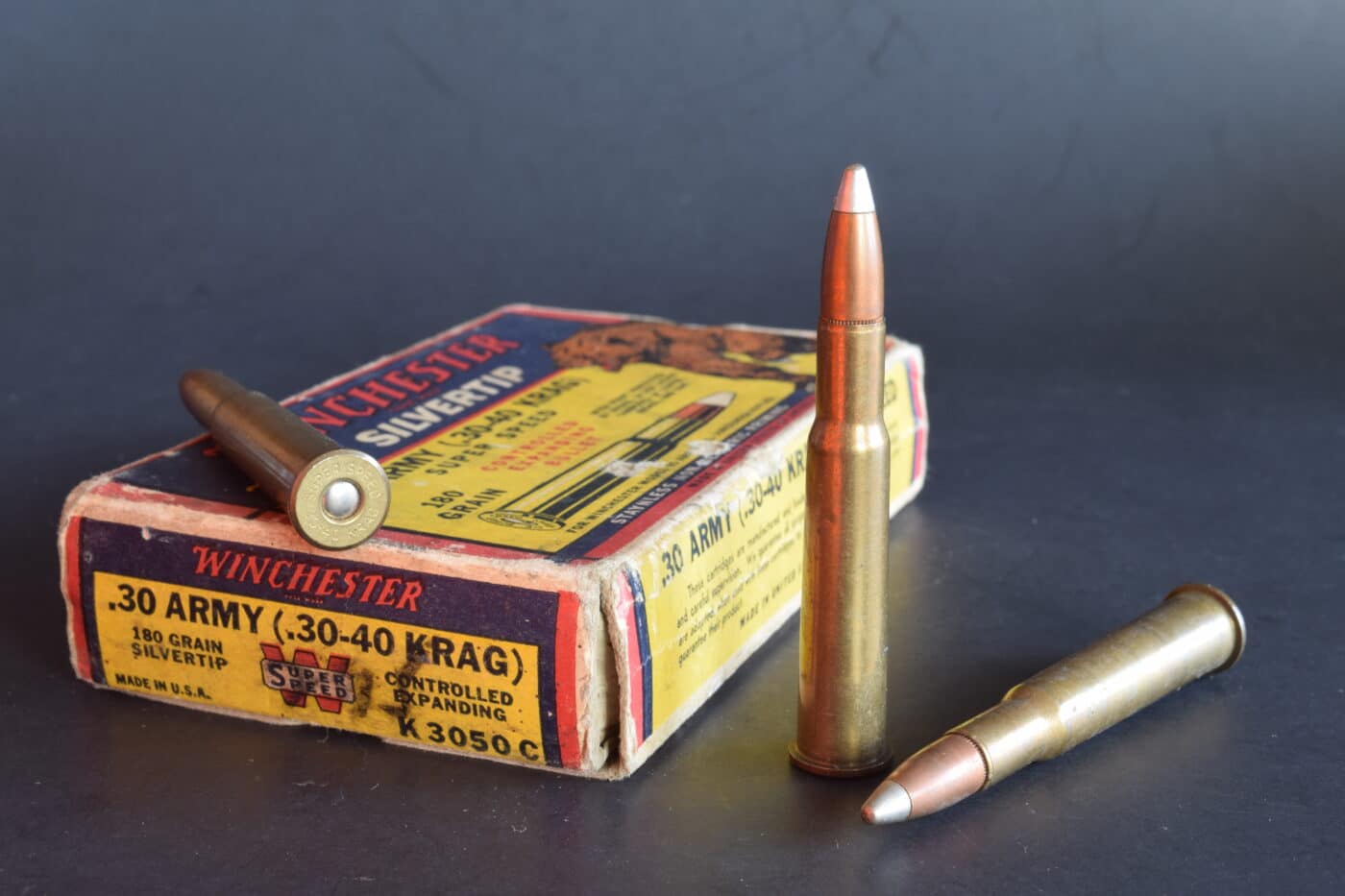
The Krag’s military 220-grain bullet at 2,200 fps soon gave way in the field to sleeker 180s at 2,470 fps.
A trap door hinged at its front gave access to the chamber.
Fired case withdrawn, the soldier inserted a fresh round and snapped the door shut.
Springfield Carbines, introduced in 1870, fired the .50 U.S. Carbine, its 400-grain bullet clocking 1,200 fps.
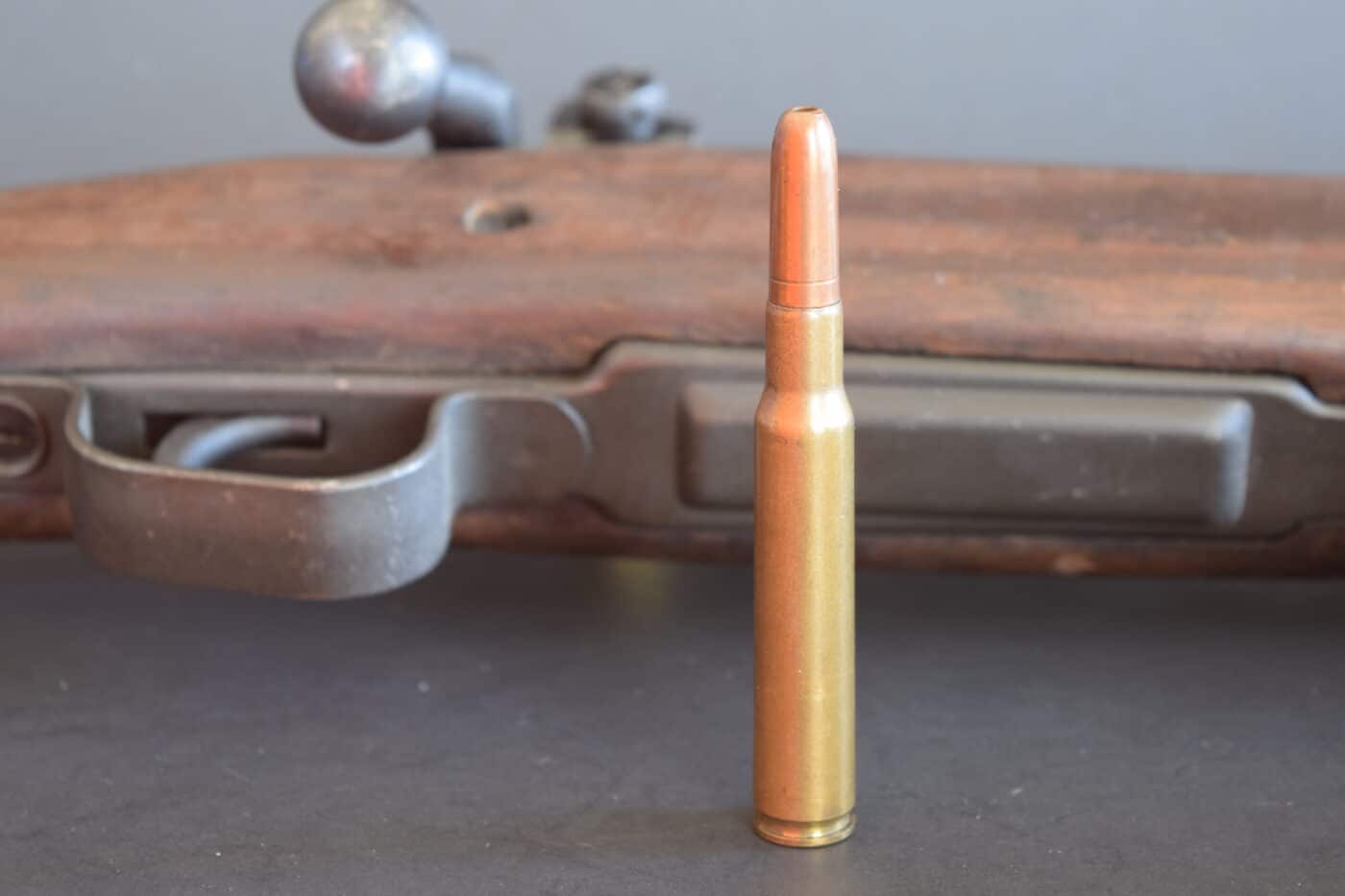
The .30-06 for the Springfield (here an 03A3) is a slightly shorter version of a 1903 cartridge with a 220-grainround-nose bullet.
Neither saw action in a war.
As late as 1934, New York distributor Francis Bannerman & Sons sold .50-70 Springfield rifles and cartridges.
The bolt-action Krag-Jorgensen is named for Ole Krag, Superintendent of Norways Kongsberg Armory, and engineer Erik Jorgensen.
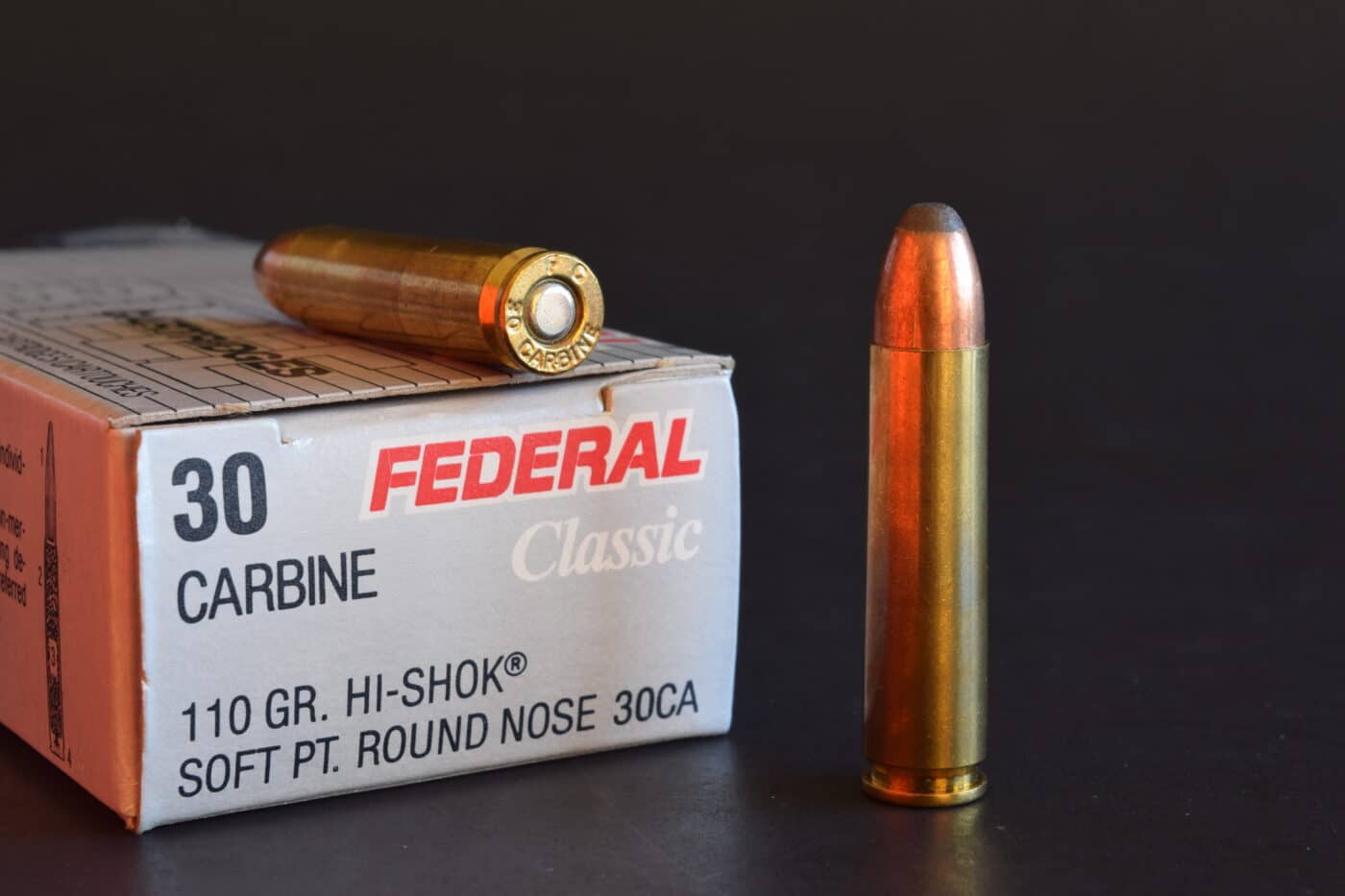
The .30 Carbine round (110-gr. bullet at 1,990 fps), evolved with the M1 Carbine beginning in 1940.
American variations (1892, 1896, 1898) were late reaching troops.
Most U.S. regiments in Cuba during the Spanish-American War in 1898 carried 1873 Springfields!
Absence of smoke was a great blessing.
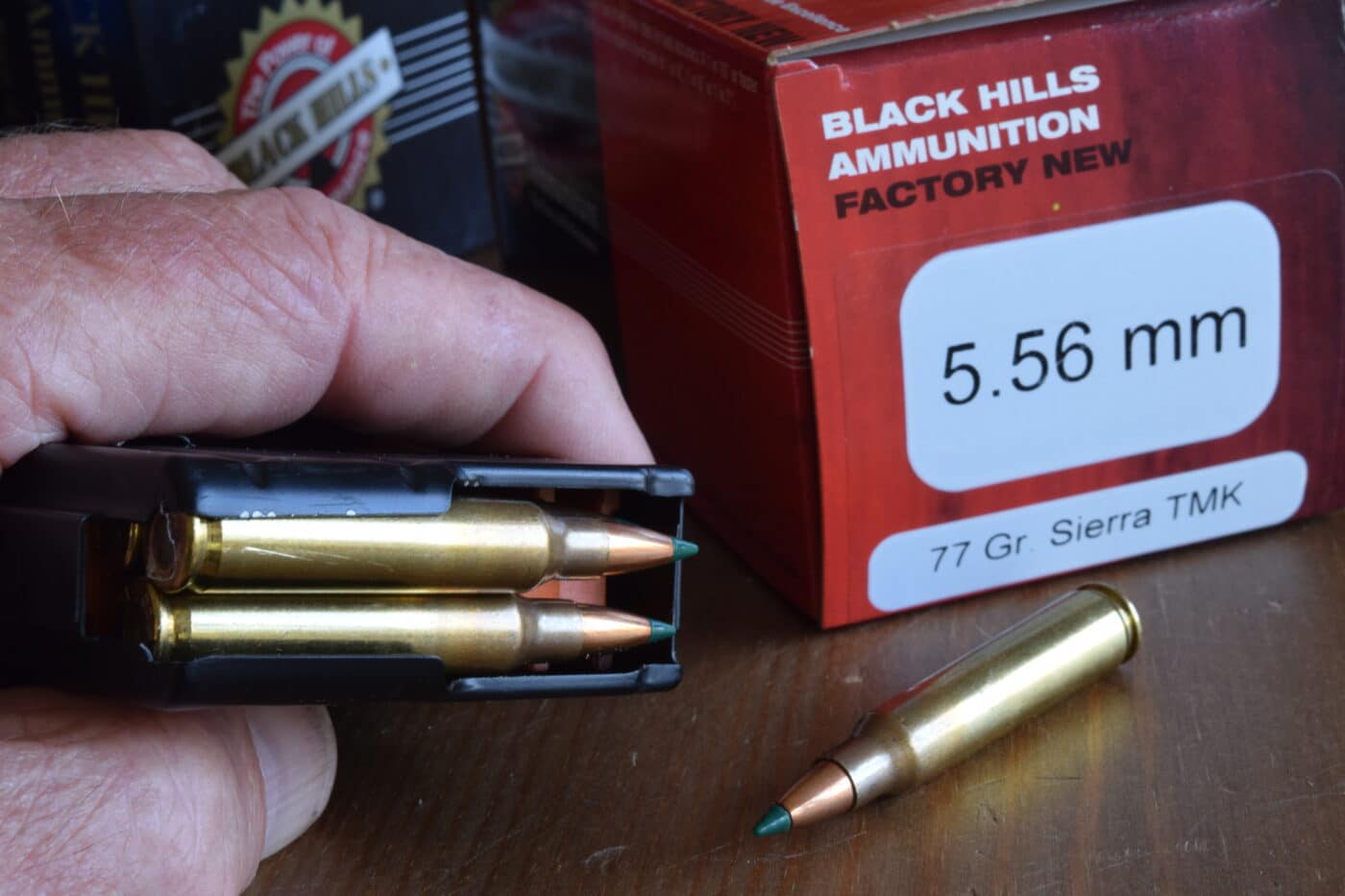
Myriad loads for the .223 and 5.56×45 NATO exist. Cases with these two headstamps are the same, but loads and rifle throats can differ.
Black powder smoke drew enemy fire and curtained the battlefield.
Where Theres Smoke…
Alas, smokeless powder didnt ignite as easily as black.
Adding fulminate for a hotter spark led to cracked cases.
Cause: mercury residue.
Absorbed by black-powder fouling, it attacked the zinc in cases left clean by smokeless fuel.
A non-mercuric primer, the H-48, came in 1898 for the Krag.
Its detonating component, potassium chlorate, didnt harm cases; however, the remaining corrosive salts caused rust.
But plans to replace the Krag rifle began not long after the Army adopted it.
Fed by stripper clips, Spanish Mausers in 757 had maintained withering fire.
U.S. armorers designed this loading feature into a fresh bolt rifle in 1901.
Its 30-caliber 220-grain bullet at 2,300 fps matched Germanys 857 with a 236-grain bullet at 2,125.
A year after the .30-03s debut, Germany adopted a pointed 154-grain 8mm bullet at 2,800 fps.
U.S. response: the Ball Cartridge, Caliber .30, Model 1906.
It spat a 150-grain bullet at 2,700 fps from a case shortened .07, to 2.494.
All .30-03 rifles were recalled for re-chambering.
Like the .30-40 Krag, the .30-06 began life as the .30 Government.
Instead of .303 British, the U.S. Rifle, Model 1917 fired the .30-06.
The advantage of ahigh ballistic coefficient at long-rangeprompted a new load, with a 173-grain spitzer at 2,646 fps.
In 1939 the Army adopted a 152-grain spitzer at 2,805 fps.
With theM1 Garand rifle, it helped the U.S. win WW II.
John C. Garanddeveloped a primer-actuated self-loading rifle by 1920.
The number reflected chronology.
It ejected automatically after the last round was fired.
It was especially helpful in self-loading mechanisms.
David Marshall Carbine Williams, then serving a sentence at a North Carolina prison farm, stepped in.
Winchester engineers paired his short-stroke gas piston design with a Garand-style rotating bolt and operating rod.
The resulting arm weighed and cost about half as much as a Garand.
(Garand production: 5.4 million.)
Result: the experimental T-65.
Winchester liked it and in 1952 offered it to hunters as the .308 Winchester.
Two years later the U.S. Army adopted the round for itsM14 battle rifle.
In 1957 it became the 7.6251 NATO.
The initial M59 load with 150-grain bullets soon gave way to the M80 with a 147-grain.
In 1965 M118 Match loads arrived, firing 173-grain bullets.
Tighter groups came with the 118LR and its 175-grain Sierra MatchKing, which stayed supersonic to 1,100 yards.
Springfield Armory gave the M14 a civilian face with itssemi-automatic M1A.
While the 7.6251 NATO case holds 20 percent less powder than the .30-06s, muzzle velocities are very close.
Traditional 7.6251 NATO loads sent 150-grain softpoints at 2,820 fps, just 90 fps off .30-06 speed.
Throats in .308 and 7.6251 NATO barrels can differ.
To learn more about the differences, clickhere.
Similar disparities mark the .223 Remington and 5.5645 NATO, our current infantry round.
To learn more about these differences, clickhere.
Dubbed the .222 Special, this cartridge had a case .06 longer than the .222s.
While the 5.5645 NATO has given good account at distance, snipers favor more drift-resistant bullets of larger diameter.
But thats a tale for another time.




